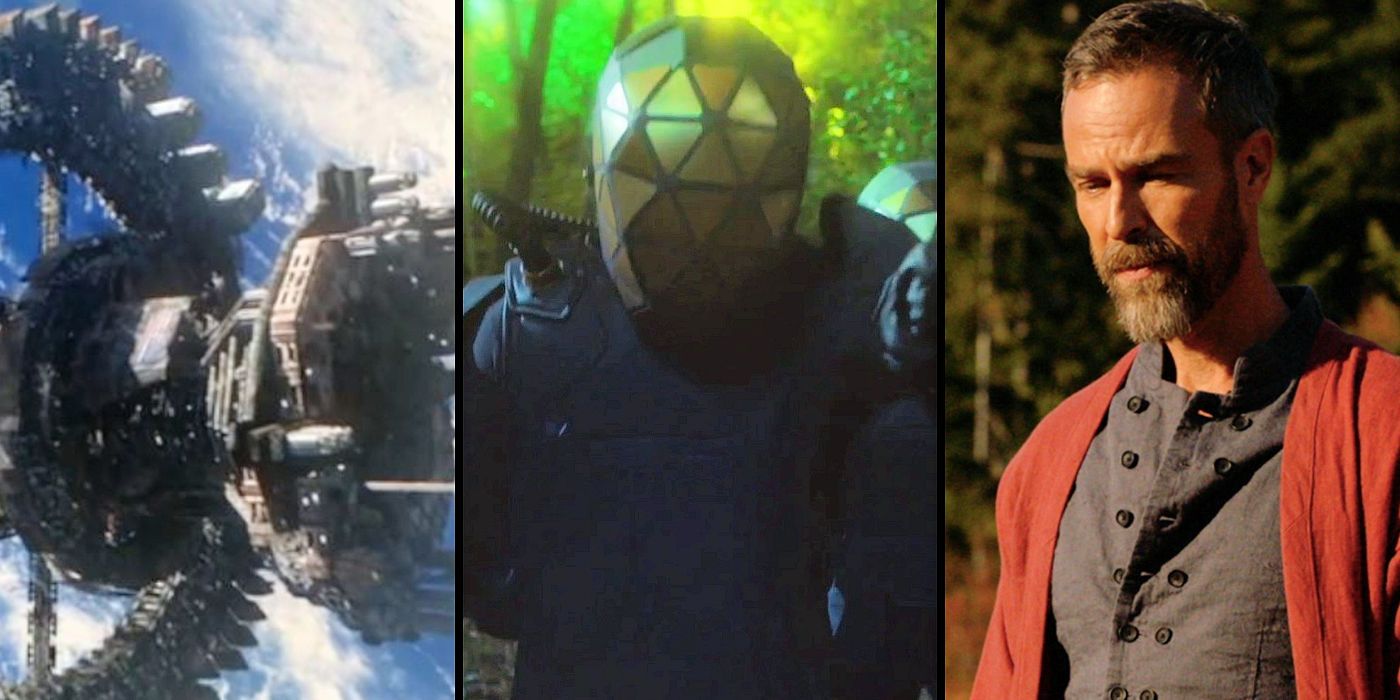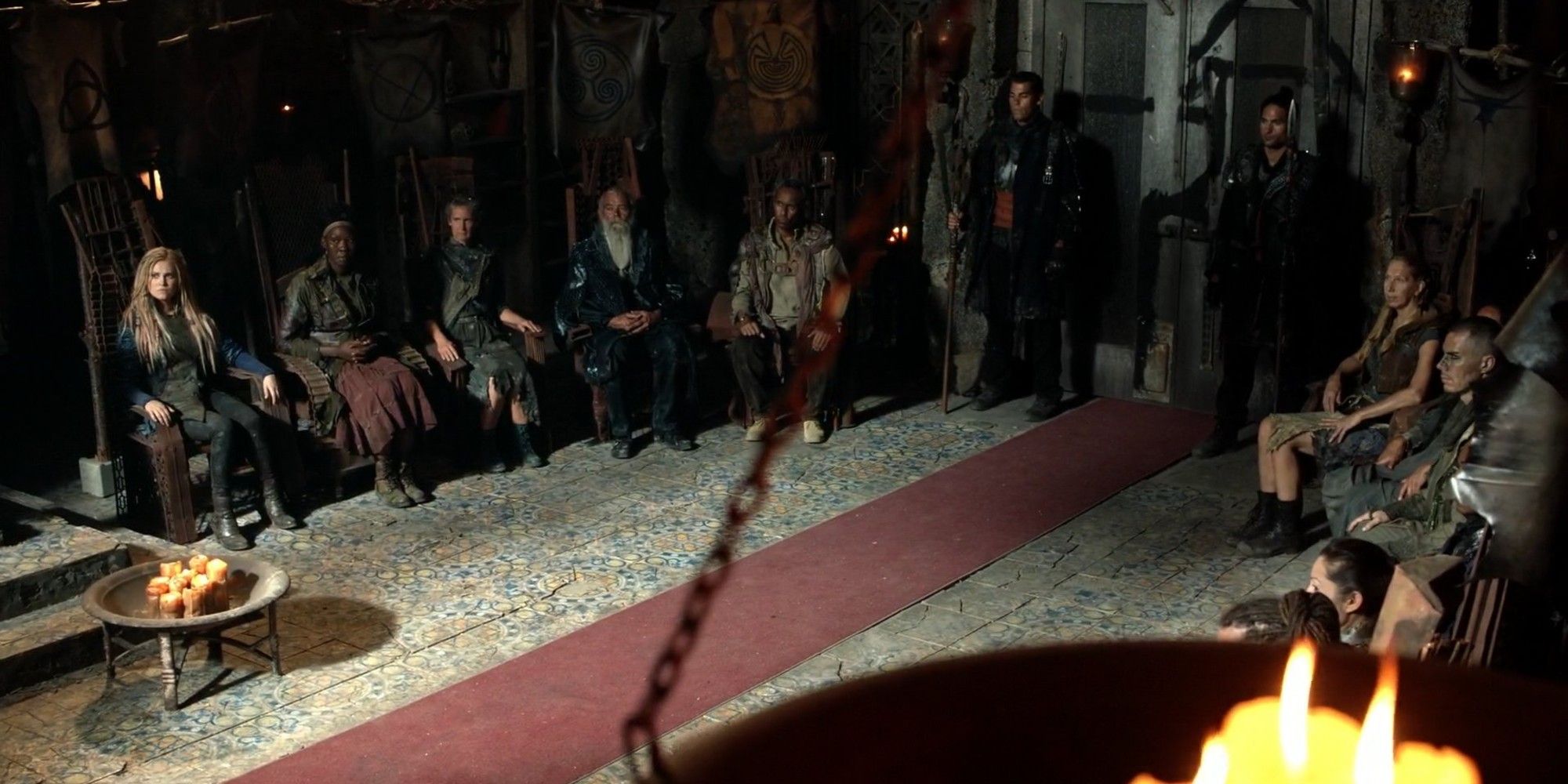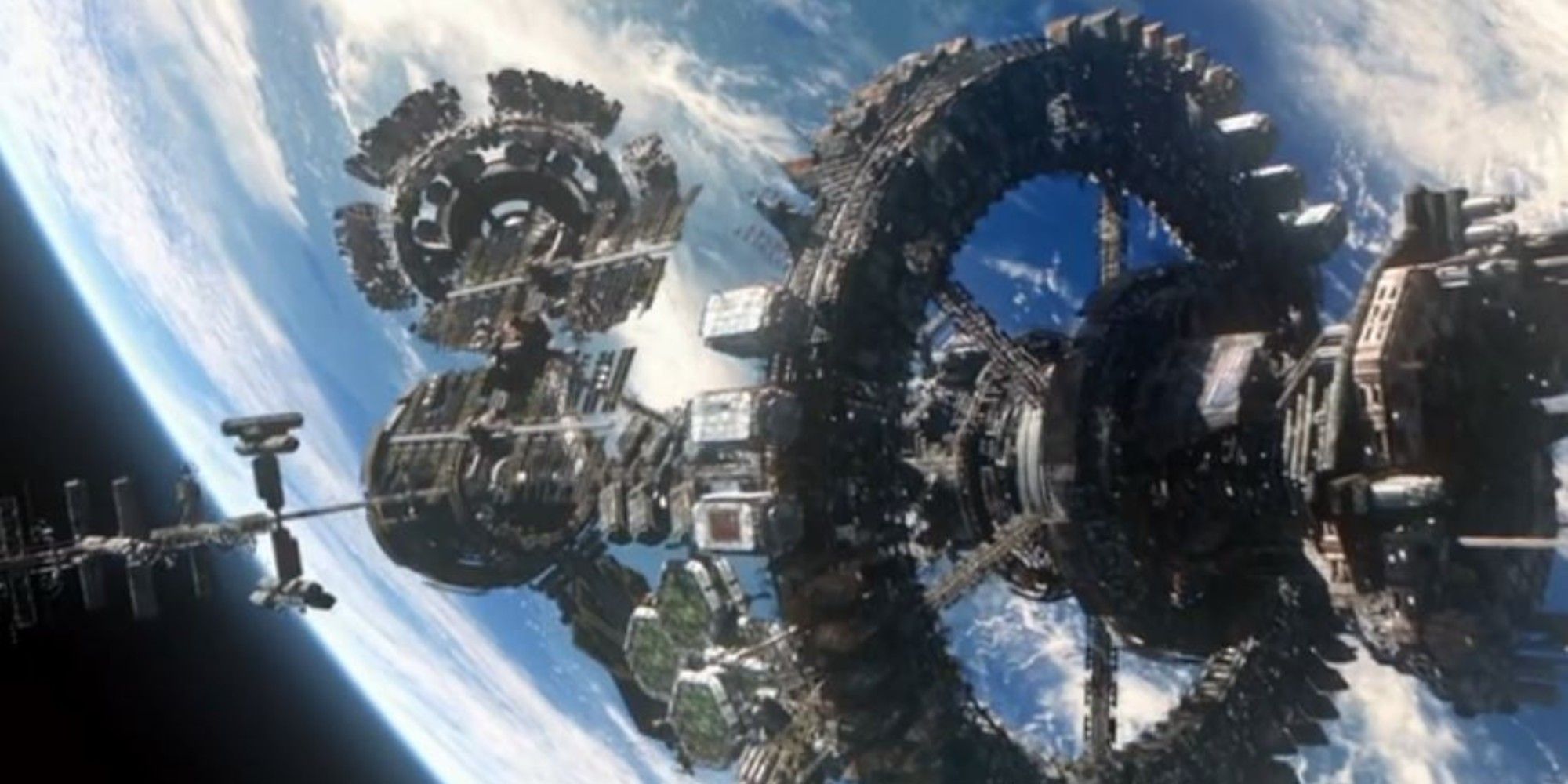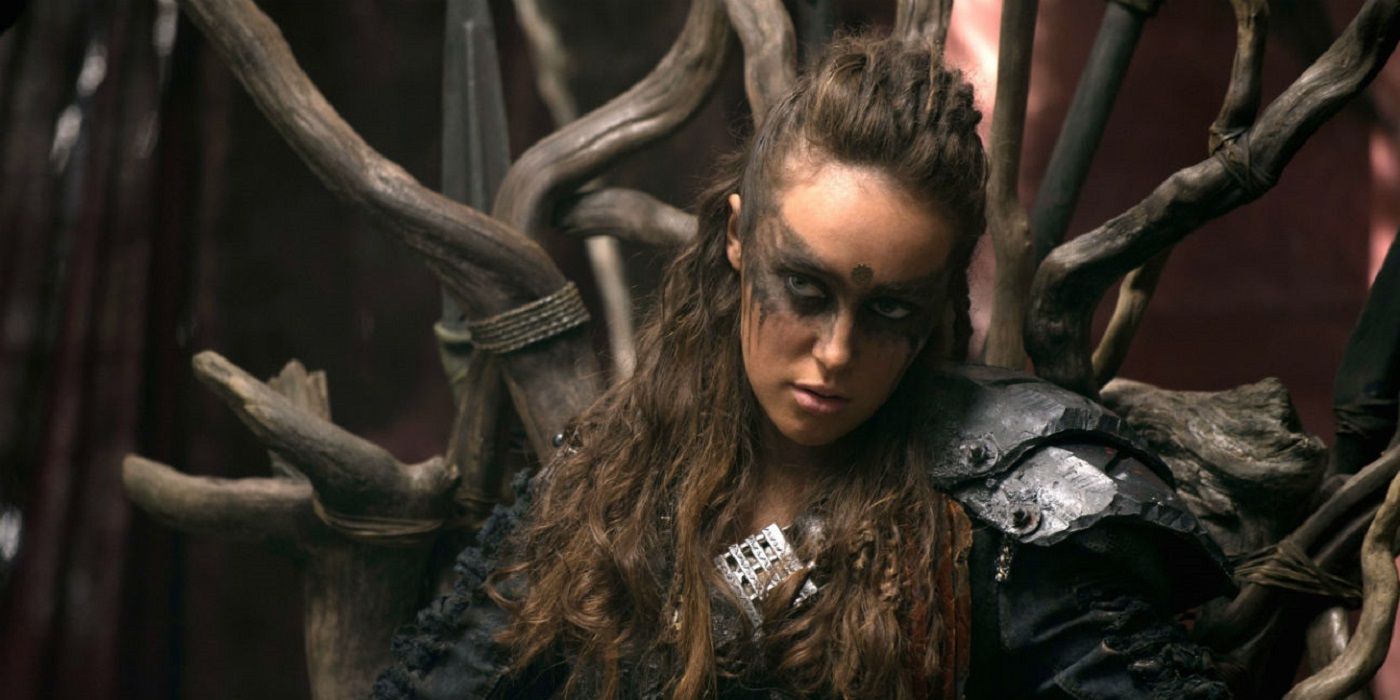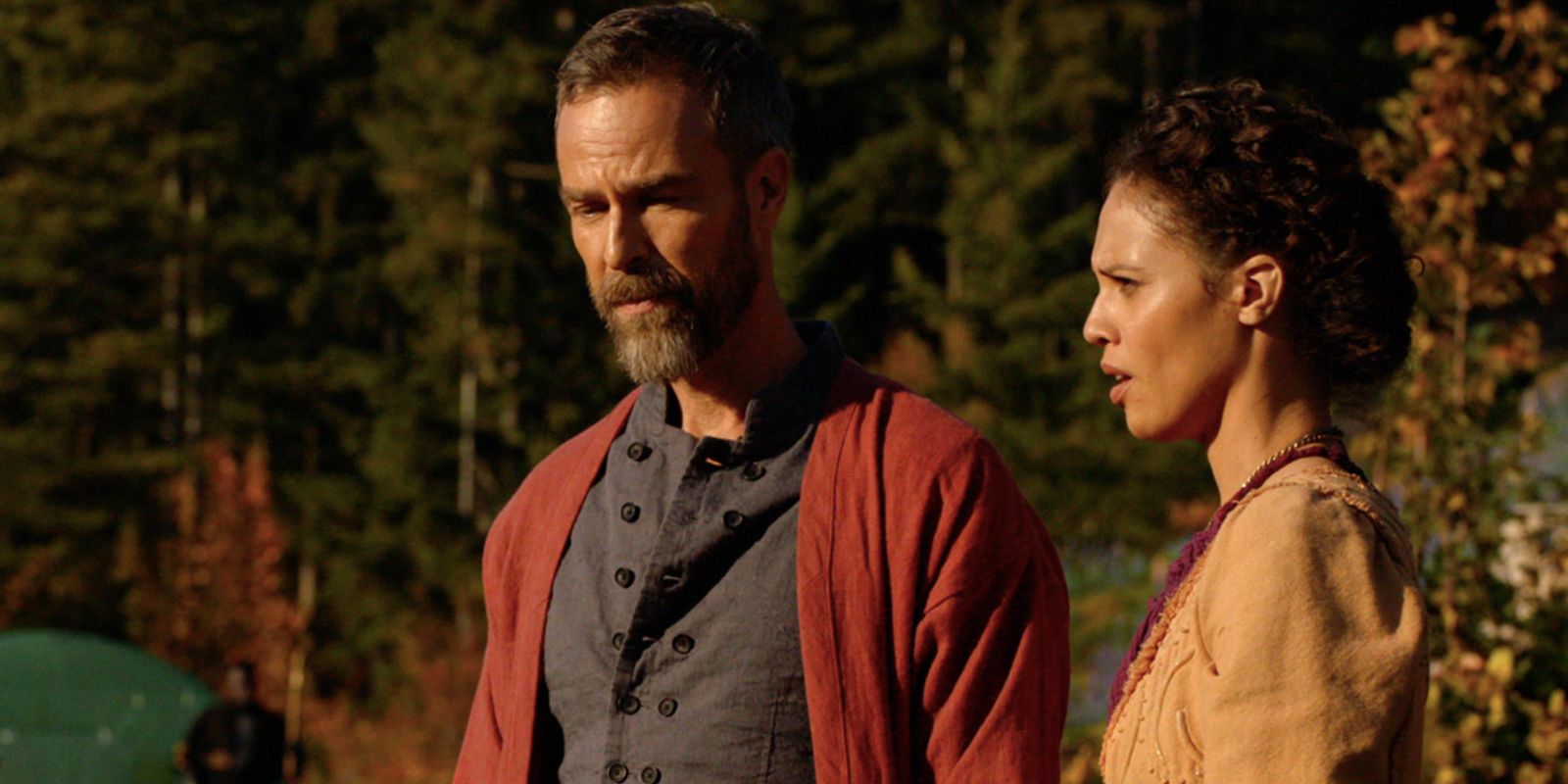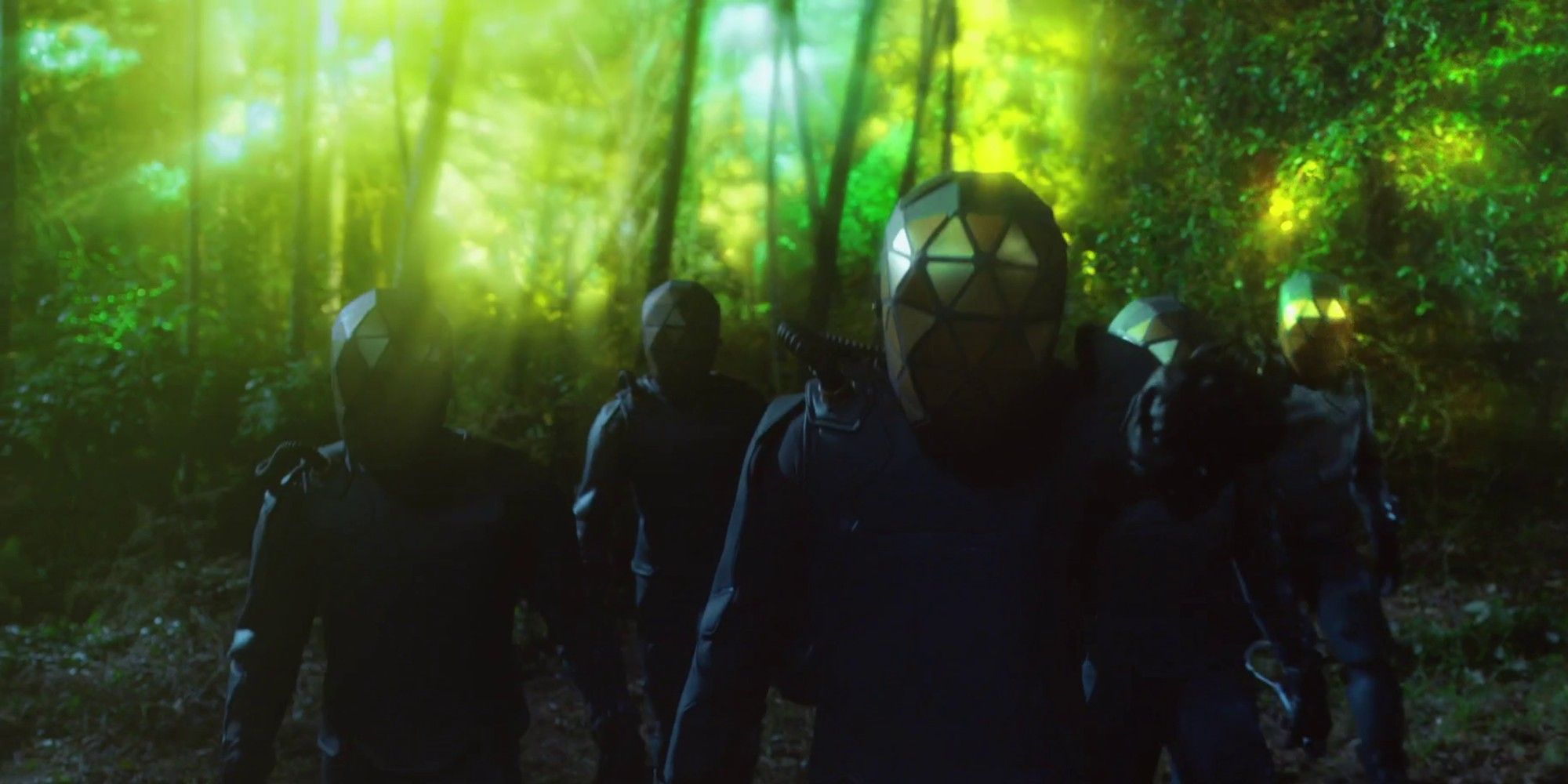The 100 gets good mileage out of using the number 13 in significant places, where the number’s association with bad luck intentionally (and unintentionally) comes up frequently. It’s not focused on constantly or even in every season, but when the number 13 comes along, it brings some tension along with it.
This is far from unique to The 100, as 13 is a number that’s long been associated with bad luck. In addition to religious reasons and common superstitions, it’s also an awkward number. While 12 is a nice, easily divisible number that’s frequently used for that reason, 13 is a prime number that’s just one greater.
There are at least five significant uses of the number 13 in The 100, four of which are story-related and one that has a more meta relation to the show. The in-story reasons are also all about a number going from a nice 12 to the awkward 13, usually a sign of rising tension that causes conflict to break out between different groups.
The 13 Clans
In the first season, The 100 mostly treated the Grounders as a singular group, the people who survived the first nuclear apocalypse. As the main characters spent more time on the ground, though, that notion fell away to show that the Grounders were much more complicated, with their own cultures and clans. By The 100 season 3, it was well established that there were 12 Grounder clans, rather than just one group.
During season 3, the main characters (called Sky People to distinguish them from the Grounders) looked to join the alliance that had been made between the Grounder clans. Their joining meant that there would be 13 clans, a change that caused tension with the rest of them. A lot of the season’s conflict came from the addition of the 13th clan, along with the parallels between the clans and the space stations that predated the beginning of the show.
The 13 Space Stations
The 100 starts up on The Ark, a space station that’s believed to contain the last remnants of humanity after a nuclear apocalypse 97 years in the past. While it’s considered a single space station when the show starts, it actually came from 12 separate stations joining together to combine people and resources. This is the story told on the Ark, but leaves out some key details.
There was originally a 13th space station, Polaris, which was never brought into the fold to form the Ark. In fact, it was shot down with a missile by the American space station. The official story is that they refused to join, but the reason was more sinister than that. Surviving on the Ark was going to be hard and required some form of central control, so the main station, Alpha, shot down Polaris to bring the rest into compliance.
Shooting down Polaris also served to save the other stations from possibly being infected by A.L.I.E. 2.0, the artificial intelligence developed by Becca Franco. The first version of the AI caused the nuclear apocalypse, so having Polaris with the updated version of that AI interacting with the others was seen as a risk they couldn’t take, providing a good cover story for destroying the 13th station for the sake of keeping everyone else in line. Becca and A.L.I.E. 2.0 survived, with the latter becoming the Flame, which still plays a major part in the season 7 story.
The Most Controversial Episode is “Thirteen”
The 100 season 3, episode 7, “Thirteen” is the most controversial episode of the show. In that episode, the story of the 13th space station, Polaris, is revealed to parallel the 13 clans and the tension between them. While that is the majority of the story that’s being told in that episode, few people think about it when discussing that episode, as another major event happens in the end that makes many fans forget everything else that happened.
“Thirteen” is infamous as being the episode where Lexa is killed, after Alycia Debnam-Carey was cast in a lead role on Fear the Walking Dead. Her relationship with Clarke was a fan-favorite, and while her death was the most feasible way to explain her absence from the show, the way that it happened didn’t go well. Rather than a big moment, like her reappearance in the City of Light at the end of the third season, her death was an accident, with Clarke being the intended target. This moment overshadowed not only the rest of the episode, but especially for the uninitiated, it has overshadowed the rest of The 100 completely.
The 13 Primes
The Primes were the main antagonists in The 100 season 6, the original settlers of the moon Sanctum who attained technological immortality. Unlike most of the other examples on The 100, there were originally 13 Primes, only to be later reduced to 12. The 13th Prime, Gabriel, defected from Sanctum, leading a group that fought to bring down the Primes instead. All of this happened in the backstory, though Gabriel ultimately played a role in the destruction of the Primes.
Level 13 for the Disciples/Second Dawn
The Second Dawn was a doomsday cult first revealed in The 100 season 4. All that was shown of the cult itself before season 7 was a video of their leader, Bill Cadogan, and the bunker that Wonkru occupied between seasons 4 and 5. Despite that, Second Dawn has had a large impact in the background of the series, being the source of both the Grounders and the Disciples on Bardo.
Second Dawn and the Disciples share a system where members can level up to higher ranks within the cult. On Earth, this meant that only those who reached the “highest” level, level 12, could get access to the real bunker, while the rest all died in a decoy bunker. On Bardo, it’s revealed that there’s a 13th level when Anders goes down to a literal 13th level in the Bardo compound. There’s a cryopod on that level, where Bill Cadogan is kept in stasis until he’s woken up by Anders, who brings him news that Clarke, the key to humanity’s last war, has been found.
-
For its connotations of bad luck, the number 13 has appeared in a number of places in The 100. While not playing a big part in every season, it comes up frequently enough when there’s a twist coming or the tension in the story needs to be fueled, living up to its reputation as an unlucky number.

